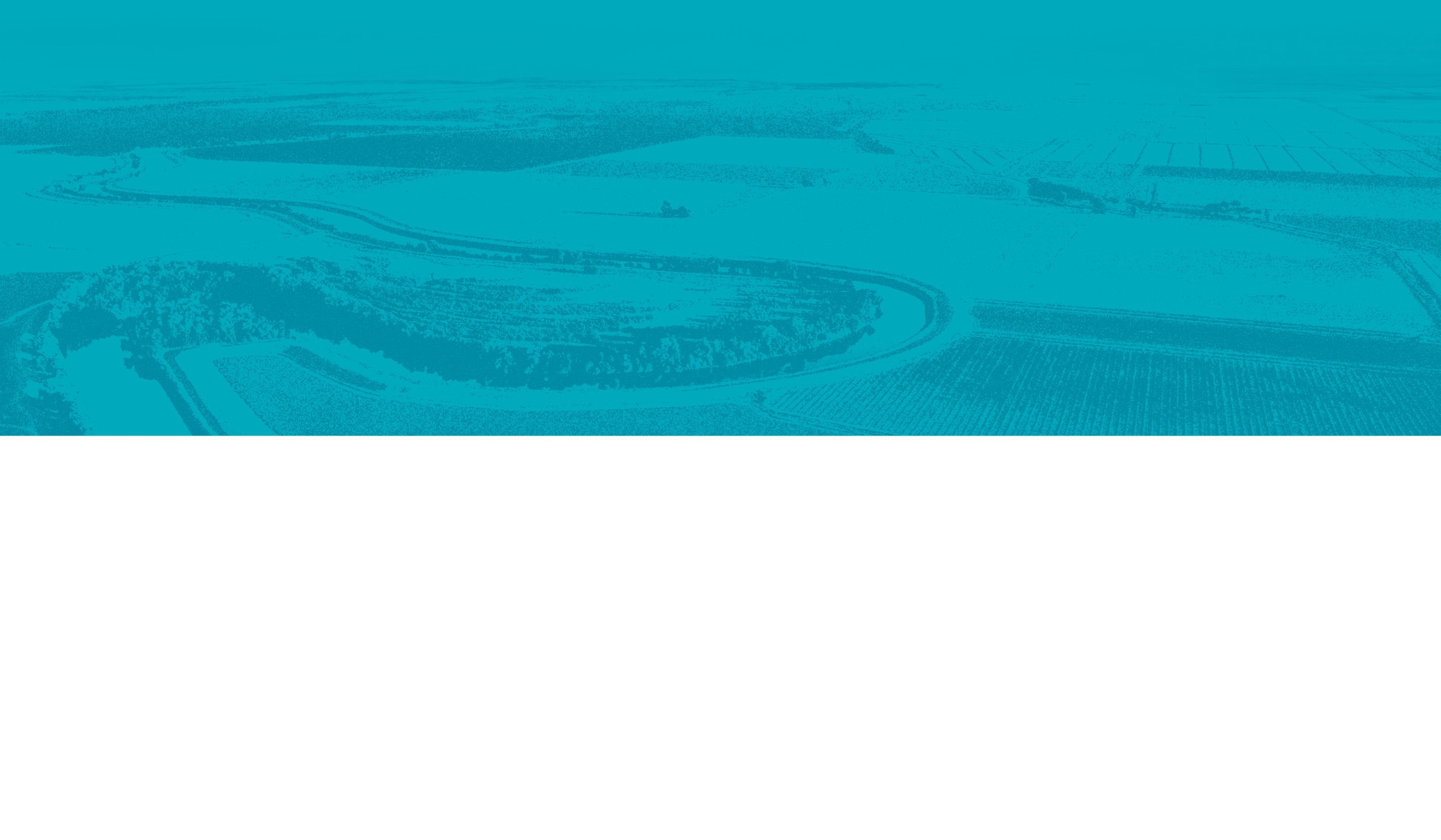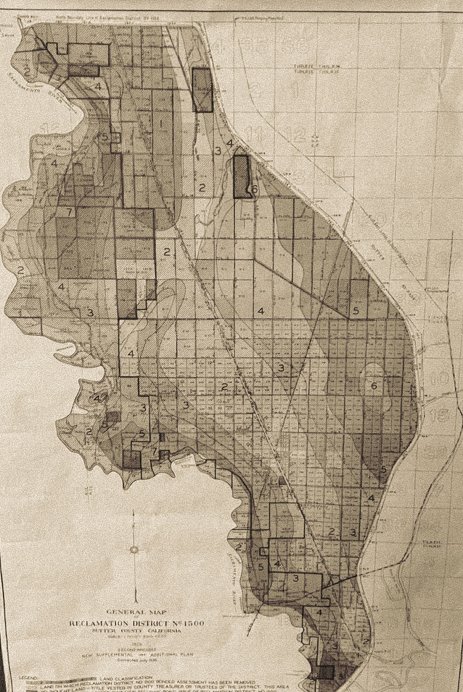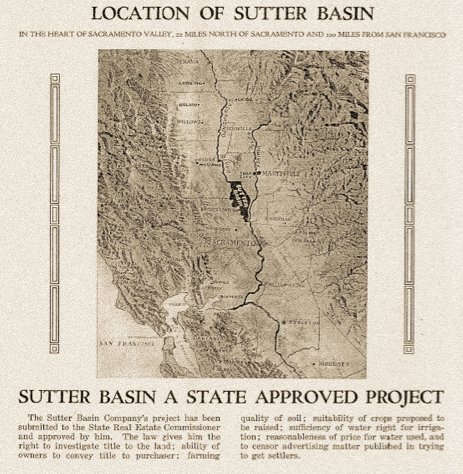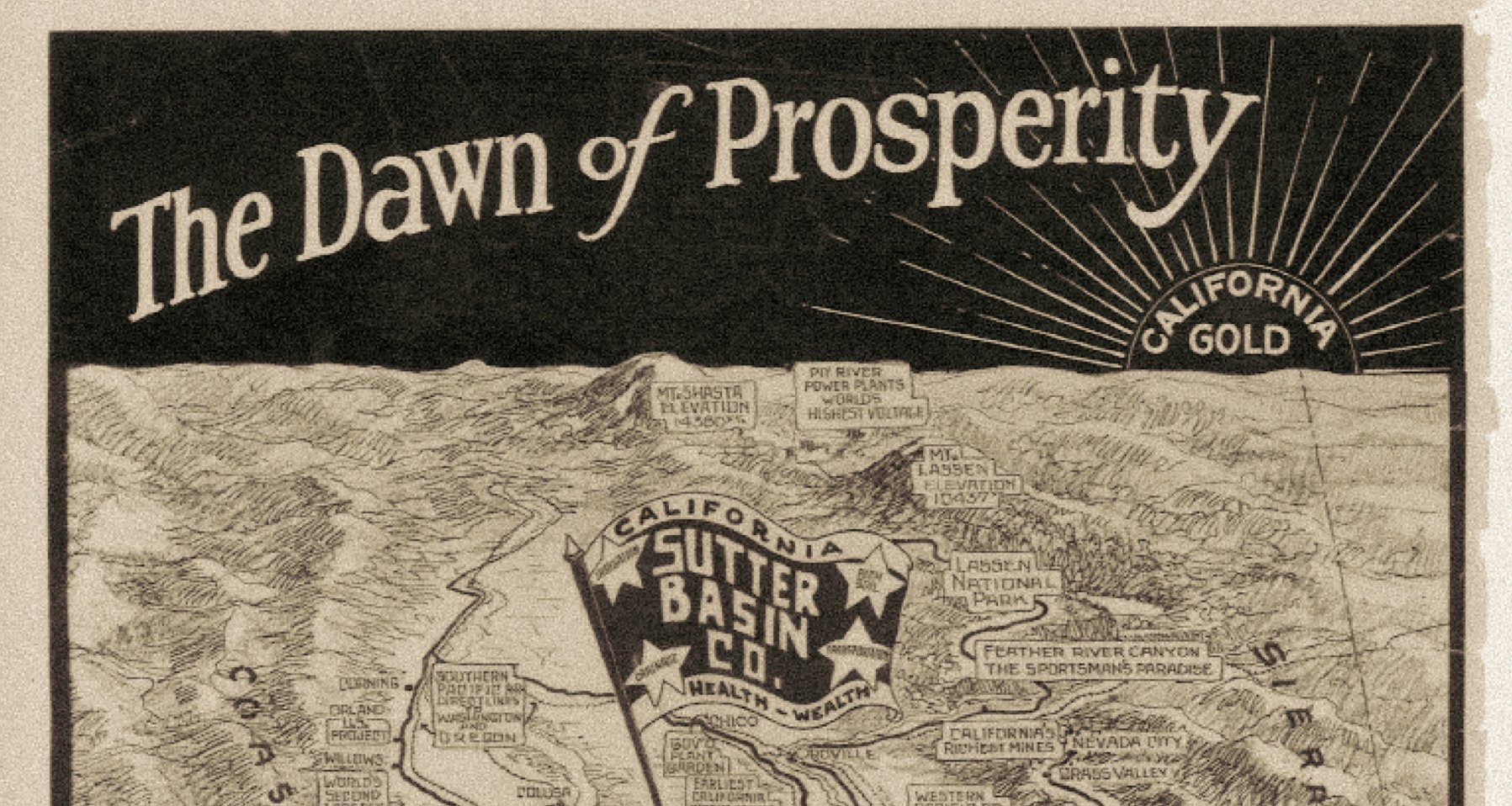
Our History
A Brief History of RD1500, Sutter Mutual Water Company and the Basin Irrigation and Drainage Authority.






Part 1
-
The great Central Valley of California was transformed by the passing of the Swamp Land Act of 1850. From impenetrable lands that routinely saw Tule sprout twelve feet high paired with the flooding of more than a million acres at various times of the year, the Swamp Land Act spurred vast agricultural growth across the valley as the flood waters were channelized and kept at bay with the construction of dams, weirs and levees.
-
The Sutter Basin was rich in alluvial soils that were perfect for growing a wide range of crops by farmers eager to capitalize on the ample water supply. The population boom in the west drove demand higher for fruits and vegetables and the new settlers in the Basin were eager to meet that need. However, the land was often underwater, making each season unpredictable and extremely risky to plant seeds into the ground.
Sutter County residents Peter and Frank Snook believed the area could become an agricultural wonderland if the basin waters could just be controlled. Their vision came in 1910 after hitching a ride on a dredger captained by Pete Jacobson. The three men had neither the political clout nor the cash to build a robust flood control system and eventually outside help would be needed to see their dream come to life.
-
The first break came a year later, when in 1911 the California Debris Commission convinced state and federal agencies that flood control was vital to not only the future of the Basin, but the increased revenue from nearly 70,000 acres of productive agricultural land would be a boon to the state economy.
With the approval in hand, William Gerber, who served as president of the California National Bank, and along with several other influential businessmen and newspaper men from Sacramento, provided the first infusion of cash. Subsequently, George Robbins a former employee of J.Ogden Armour, convinced the Chicago meatpacker to invest in the development of the Basin to round out the necessary funding. While, J. Ogden would lose much of his fortune in the Great Depression, his wife, Lola, who held oil stocks (which skyrocketed in value with the growing popularity and sales of the motor car) honored her husband’s promise and the family funded much of the construction costs.
Part 2
-
With financing secured, Gerber also lobbied for the creation of Reclamation District 1500 at a time when many around the state were granted reclamation district status. In 1913, RD1500 was born and in that same year, the Karnak drainage pumping plant became operational. This was vital as the plant allowed excess winter runoff to be discharged back into the bypass thus making it possible to start cultivation earlier in the spring. Upon RD1500s establishment, much of the land become privately owned through rights set forth by the Swamp Land Act and subsequently was developed for agriculture (most of it by The Sutter Basin Company).
-
However, the agreements to build the flood control system did not come without considerable controversy over who would be assessed and where the water would flow. The original plans included having flood water flow through the lowest parts of the basin in a southeastwardly direction to reconnect the water near the Sacramento River and Feather River junction where a weir would help move the water into the Yolo Bypass.
-
Disagreements of where to place levees continued into 1917 but were ultimately settled by the California Supreme Court. Construction of the entire stem was completed by 1920 which allowed RD1500 to expand to 67,000 acres - including a portion of the land placed within the Sutter Bypass.
Part 3
-
With the flood waters held back, an irrigation system delivering water to 45,000 acres was constructed in 1920, and with it, the formal creation of the Sutter Mutual Water Company. The Tisdale Pumping Plant, located just south of the Tisdale Weir along the Sacramento River, was built and became the main supplier of water to landowners. The Tisdale pumping plant now paired with the Karnack drainage pumping plant, cleared the possibility for farming to occur throughout the entire Basin.
-
In the early 1900s landowners attempted a variety of fruits, grains and vegetables, but ultimately rice and tomatoes have become the dominant crops grown in the Basin today.
-
To help bring Sutter Mutual Water Company and RD1500 staff operations under one to improve cost and work efficiency, the Basin Irrigation and Drainage Authority was created in 2017. BIDA is overseen by members of the RD1500 and Sutter Mutual Water Company board of trustees.

~ Today ~
BIDA, RD1500, & SMWC
Parts of the history outline are derived from THE SUTTER BASIN AND ITS PEOPLE, written by Wm J. Duffy Jr and from archival photos and documents obtained by Janet Alonso.










